You are using an out of date browser. It may not display this or other websites correctly.
You should upgrade or use an alternative browser.
You should upgrade or use an alternative browser.
First big consolidation in South Korean defence industry happened in the wake of Asian Financial Crisis. At the time Korean industry giants, mostly conglomerates were in a very difficult position, leading to bankruptcy and insolvency of dozens of corporate groups that were once thought to be unbeatable and invincible. Such situation wasn't really different with those who've survived the crisis as well.
At the time there were mainly four Aerospace manufacturers within South Korea, which were Samsung Aerospace Industries, Hyundai Space and Aviation, Daewoo Heavy Industries (their aviation department) and Korean Air (Hanjin). For the sake of industry restructuring for improved efficiency and to prevent self-destructive over competition, the first three were merged into a single company, in what was then called a "Big Deal" number two. The first one will be introduced later.



Daewoo Heavy Industries commercials of the time, as well as their helicopter factory.

Hyundai Space and Aviation Commercial

Samsung Aerospace Industries commercial. Samsung won the bid in Korean Air Force's KFP program and was tasked with licensed production of F-16s and their engines. The offset of KFP was GD's involvement in KTX-II program which later became T-50. Samsung was naturally also tasked with the development of the KTX-II advanced trainer as well. GD sold it's Fort Worth division to Lockheed around the time, which funnily enough meant that none of original main-contractors of the KFP program were involved in the KTX-II program with the same name.
The newly formed company was called Korea Aerospace Industries or KAI in short and have took over most of the aerospace related programs of the three companies. Those that were not part of this merger will also be introduced in another post of this thread.


Another consolidation that took place during the same period to the aerospace industry was the merger of rolling stock manufacturers. These were the rolling stocks and military vehicle divisions of Hyundai Precision Engineering, Daewoo Heavy Industries and Hanjin Heavy Industries. The main focus of this merger was consolidation of rolling stocks manufacturers, but since HPE was also tasked with the development and manufacturing of armored vehicles of the Korean Army, this in part led to a sort-of consolidation in defence industry as well. The resulting company of this merger was KOROS, which later changed its name to Hyundai Rotem. Today, due to economic developments and newly found markets, there are again three separate major rollingstock companies in Korea, just like before the consolidation.

HPE commercial about K1
At the time there were mainly four Aerospace manufacturers within South Korea, which were Samsung Aerospace Industries, Hyundai Space and Aviation, Daewoo Heavy Industries (their aviation department) and Korean Air (Hanjin). For the sake of industry restructuring for improved efficiency and to prevent self-destructive over competition, the first three were merged into a single company, in what was then called a "Big Deal" number two. The first one will be introduced later.
Daewoo Heavy Industries commercials of the time, as well as their helicopter factory.
Hyundai Space and Aviation Commercial
Samsung Aerospace Industries commercial. Samsung won the bid in Korean Air Force's KFP program and was tasked with licensed production of F-16s and their engines. The offset of KFP was GD's involvement in KTX-II program which later became T-50. Samsung was naturally also tasked with the development of the KTX-II advanced trainer as well. GD sold it's Fort Worth division to Lockheed around the time, which funnily enough meant that none of original main-contractors of the KFP program were involved in the KTX-II program with the same name.
The newly formed company was called Korea Aerospace Industries or KAI in short and have took over most of the aerospace related programs of the three companies. Those that were not part of this merger will also be introduced in another post of this thread.
Another consolidation that took place during the same period to the aerospace industry was the merger of rolling stock manufacturers. These were the rolling stocks and military vehicle divisions of Hyundai Precision Engineering, Daewoo Heavy Industries and Hanjin Heavy Industries. The main focus of this merger was consolidation of rolling stocks manufacturers, but since HPE was also tasked with the development and manufacturing of armored vehicles of the Korean Army, this in part led to a sort-of consolidation in defence industry as well. The resulting company of this merger was KOROS, which later changed its name to Hyundai Rotem. Today, due to economic developments and newly found markets, there are again three separate major rollingstock companies in Korea, just like before the consolidation.
HPE commercial about K1
Last edited:
You're welcome. Ironically, that insane expansions fueled by massive debts that were way larger than the company equity was exactly the reason Korea had so much trouble during the AFC. Had they have more reasonable management and finances, AFC wouldn't have affected the economy that bad, although the nonmonetary institutions that were heavily invested in SEA and their FX market would've met their doom regardless.Thanks, man, I got flashbacks. Korea of the 90sBefore IMF crisis Korean chaebols were expanding and soaring like crazy.
Yes, the Chaebols were reckless. At that times many of the overambitious founders were still alive and kicking.
Lee Byung Chull (until late 80s), Kim Woo Chung, Chung Ju Yung and likes never really cared about financially sound investment, they risked a lot to enter new markets hoping the government would back them up like always since Park Chung Hee. „Too big to fail …“
Tough times for the Korean people, massive layoffs, end of lifetime employment at big conglomerates. The whole society changed after that crisis.
Lee Byung Chull (until late 80s), Kim Woo Chung, Chung Ju Yung and likes never really cared about financially sound investment, they risked a lot to enter new markets hoping the government would back them up like always since Park Chung Hee. „Too big to fail …“
Tough times for the Korean people, massive layoffs, end of lifetime employment at big conglomerates. The whole society changed after that crisis.
Next up is another "Big Deal". This time it's between Hanwha and Samsung.

 www.hankyung.com
www.hankyung.com

 www.joongang.co.kr
www.joongang.co.kr

 www.hankookilbo.com
www.hankookilbo.com
This deal was initially started by the change of management of Samsung Group in the early 2010s. Lee Jae Yong, Samsung's new owner, CEO and Chairman was very keen on streamlining Samsung Group as a whole mostly by getting rid of non-core subsidiaries and divisions and focus on core corporate industries. One of the non-core business was aerospace and defence, which had a long history within Samsung was still a problematic child, what we call "chicken's ribs" in East Asia. It's values are too vague to be either discarded or kept. This was especially the case due to the fact that foreign investors weren't really pleased by the fact that a B2C business was involved in something like defence sector, which also is the exact reason Samsung Heavy Industries isn't involved with naval shipbuilding. Another business Samsung wanted to get rid of was their chemicals sector, which was profitable but was not as profitable and lucrative as their electronics divisoin. They wanted to expand their electronics division even more with the liquidity they would be able to secure by selling these divisions.
Anyways, around the same time, there was a company who was looking to strengthen and diversify their defence division, a complete opposite to Samsung, and that was Hanwha. Hanwha is a shortened name for "Korea Explosives" or Hanguk Hwayak, the original name of Hanwha when it was first founded. As the name suggests, Hanwha's primary business was the manufacturing of explosives, which was synonymous with getting involved in the defence industry as a munitions manufacturer at the time. They later expanded their business starting from 1964 and soon their non-defence sector grew in such scale that it dwarfed their defence sector. Even so, they never forgot their origins as an explosives manufacturer and have long been one of the two major suppliers of various munitions to the RoK Armed Forces, alongside Poongsan.
As it was clear that the interests of the two companies aligned, things progressed very quickly. In late 2014, a takeover deal was signed worth around $1.8 billion. Samsung Techwin, Samsung Thales, Samsung Total and Samsung General Chemicals were all merged with Hanwha. The newly acquired defence divisions formed the new heart of Hanwha's defence sector, which today is under the umbrella of Hanwha Defense, a subsidiary of Hanwha Aerospace. Both of these divisions were formed almost entirely through mergers.

Samsung Techwin consisted of three departments, which were aerospace gas turbines department, armored vehicle department and security solutions department. The first was originally part of Samsung Aerospace Industries I've mentioned above, which was spun off before the aerospace consolidation. Samsung Thales was, as the name suggests, a JV between Samsung and Thales and was one of the two major defence electronics manufacturer of Korea, the other being LIG Nex1 which itself was part of Geumsung Precision, which later became LG (LG is an acronym of Lucky Geumsung).

View attachment 245A954452F427BA2F.jfif

Now after 8 years, the result of the deal seems to have been very positive for both sides. For Hanwha, they've expanded their manufacturing business hugely starting with this deal and created great synergies. These new manufacturing divisions are backed by the liquidity flow of their financial divisions but could also act as a buffer for any kind of financial crisis.
After the deal with Samsung, Hanwha took over 2 more companies to solidify their newly formed Aerospace and Defense division. The first was Doosan DST. Doosan DST was part of - you might have guessed it by now - Daewoo Heavy Industries which was merged with growing Doosan group after Daewoo Group's insolvency. The company was initially part of Doosan Infracore, famous as the manufacturer of K2 tank's engine for us military enthusiasts, which was later spun off as a ground defence division to be sold off. The rest of the Doosan Infracore was a general heavy machinery manufacturer which manufactured construction equipment, machine tools, engines etc. With the merger of Doosan DST, Hanwha combined it with the ground defence division of Hanwha techwin to form Hanwha Defense ground equipments division. Their currenrt porfolio ranges from K9 to AS-21 and various other ground vehicles. Another merger was the takeover of a US gas turbine components supplier EDAC, as well as the take over of around 20% stakes in PW's Singapore manufacturing facilities. With these mergers, Hanwha formed Hanwha Aero, later Hanwha Aerospace based on the gas turbine division of Samsung Techwin. They are currently involved in various aerospace turbomachinery, including rocket engines of the KSLV launch vehicles. They are also the system integration main contractor of the KSLV-II program and will be responsible as private supplier of the rockets from the 4th launch onwards.


Although Hanwha Defense started as Samsung Techwin and Hanwha's own defence divisions, their main portfolio comes from Doosan DST products.

KRE-075 SL first stage engines manufactured by Hanwha
All in all, Hanwha's aerospace and defence division is now the biggest MIC of Korea, their portfolio ranging from ground, air and space domains. Their corporate vision could be summed up as to become a "Korean LM" and for that, they needed to expand towards one last domain, the sea.

6년 前 '삼성-한화 빅딜' 마무리…한화, 삼성 보유지분 1조에 산다
6년 前 '삼성-한화 빅딜' 마무리…한화, 삼성 보유지분 1조에 산다, 한화종합화학 지분 24% 인수 상장은 당분간 보류키로

한화, 삼성과 방산·화학 빅딜 마무리…삼성 잔여 지분 1조에 인수 | 중앙일보
이후 현재까지 한화종합화학에 대해선 한화그룹 계열사가 75.2%의 지분을 갖고 있었는데, 이번에 삼성 몫을 모두 인수하면서 99.3%(한화에너지 51.7%, 한화솔루션 47.6%) 주주가 됐다. 한화 측은 "이번 지분 인수로 한화·삼성 빅딜 시즌1이 마무리됐다"며 "시즌2는 미래 전략 사업을 본격 추진해 석유화학 회사에서 지속

한화-삼성 빅딜, 누가 승자였을까 | 한국일보
한화와 삼성그룹 간 방위산업·화학계열 4개사 ‘빅딜’은 ‘선택과 집중’을 필요로 했던 양사 모두에 득이 됐단 평가 속에 6년 만에 마무리됐다.
This deal was initially started by the change of management of Samsung Group in the early 2010s. Lee Jae Yong, Samsung's new owner, CEO and Chairman was very keen on streamlining Samsung Group as a whole mostly by getting rid of non-core subsidiaries and divisions and focus on core corporate industries. One of the non-core business was aerospace and defence, which had a long history within Samsung was still a problematic child, what we call "chicken's ribs" in East Asia. It's values are too vague to be either discarded or kept. This was especially the case due to the fact that foreign investors weren't really pleased by the fact that a B2C business was involved in something like defence sector, which also is the exact reason Samsung Heavy Industries isn't involved with naval shipbuilding. Another business Samsung wanted to get rid of was their chemicals sector, which was profitable but was not as profitable and lucrative as their electronics divisoin. They wanted to expand their electronics division even more with the liquidity they would be able to secure by selling these divisions.
Anyways, around the same time, there was a company who was looking to strengthen and diversify their defence division, a complete opposite to Samsung, and that was Hanwha. Hanwha is a shortened name for "Korea Explosives" or Hanguk Hwayak, the original name of Hanwha when it was first founded. As the name suggests, Hanwha's primary business was the manufacturing of explosives, which was synonymous with getting involved in the defence industry as a munitions manufacturer at the time. They later expanded their business starting from 1964 and soon their non-defence sector grew in such scale that it dwarfed their defence sector. Even so, they never forgot their origins as an explosives manufacturer and have long been one of the two major suppliers of various munitions to the RoK Armed Forces, alongside Poongsan.
As it was clear that the interests of the two companies aligned, things progressed very quickly. In late 2014, a takeover deal was signed worth around $1.8 billion. Samsung Techwin, Samsung Thales, Samsung Total and Samsung General Chemicals were all merged with Hanwha. The newly acquired defence divisions formed the new heart of Hanwha's defence sector, which today is under the umbrella of Hanwha Defense, a subsidiary of Hanwha Aerospace. Both of these divisions were formed almost entirely through mergers.
Samsung Techwin consisted of three departments, which were aerospace gas turbines department, armored vehicle department and security solutions department. The first was originally part of Samsung Aerospace Industries I've mentioned above, which was spun off before the aerospace consolidation. Samsung Thales was, as the name suggests, a JV between Samsung and Thales and was one of the two major defence electronics manufacturer of Korea, the other being LIG Nex1 which itself was part of Geumsung Precision, which later became LG (LG is an acronym of Lucky Geumsung).
View attachment 245A954452F427BA2F.jfif
Now after 8 years, the result of the deal seems to have been very positive for both sides. For Hanwha, they've expanded their manufacturing business hugely starting with this deal and created great synergies. These new manufacturing divisions are backed by the liquidity flow of their financial divisions but could also act as a buffer for any kind of financial crisis.
After the deal with Samsung, Hanwha took over 2 more companies to solidify their newly formed Aerospace and Defense division. The first was Doosan DST. Doosan DST was part of - you might have guessed it by now - Daewoo Heavy Industries which was merged with growing Doosan group after Daewoo Group's insolvency. The company was initially part of Doosan Infracore, famous as the manufacturer of K2 tank's engine for us military enthusiasts, which was later spun off as a ground defence division to be sold off. The rest of the Doosan Infracore was a general heavy machinery manufacturer which manufactured construction equipment, machine tools, engines etc. With the merger of Doosan DST, Hanwha combined it with the ground defence division of Hanwha techwin to form Hanwha Defense ground equipments division. Their currenrt porfolio ranges from K9 to AS-21 and various other ground vehicles. Another merger was the takeover of a US gas turbine components supplier EDAC, as well as the take over of around 20% stakes in PW's Singapore manufacturing facilities. With these mergers, Hanwha formed Hanwha Aero, later Hanwha Aerospace based on the gas turbine division of Samsung Techwin. They are currently involved in various aerospace turbomachinery, including rocket engines of the KSLV launch vehicles. They are also the system integration main contractor of the KSLV-II program and will be responsible as private supplier of the rockets from the 4th launch onwards.
Although Hanwha Defense started as Samsung Techwin and Hanwha's own defence divisions, their main portfolio comes from Doosan DST products.
KRE-075 SL first stage engines manufactured by Hanwha
All in all, Hanwha's aerospace and defence division is now the biggest MIC of Korea, their portfolio ranging from ground, air and space domains. Their corporate vision could be summed up as to become a "Korean LM" and for that, they needed to expand towards one last domain, the sea.
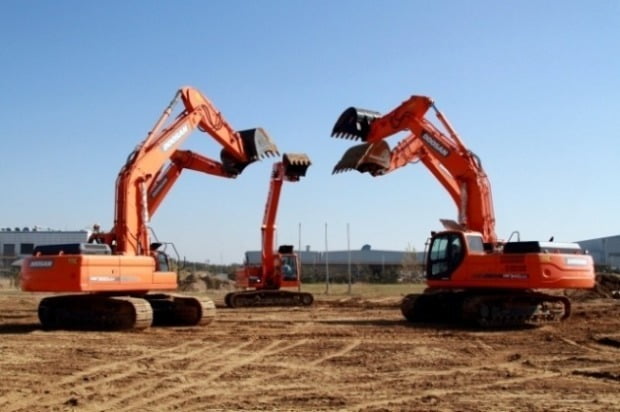
두산인프라코어 품은 현대重…'건설기계 세계 5위'로
두산인프라코어 품은 현대重…'건설기계 세계 5위'로, 우선협상자로 최종 선정 인수가 7000억대…연내 본계약 중국·인도·러시아 시장서 현대건설기계와 시너지 기대 두산그룹 구조조정 마무리 공정위 기업결합 승인 남아
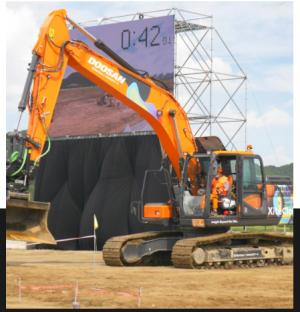
Hyundai Heavy Industries Group Bids to Acquire Doosan Infracore
Hyundai Heavy Industries Group is seeking to acquire Doosan Infracore, the construction machinery-making unit of Doosan Group, to become a major player in the
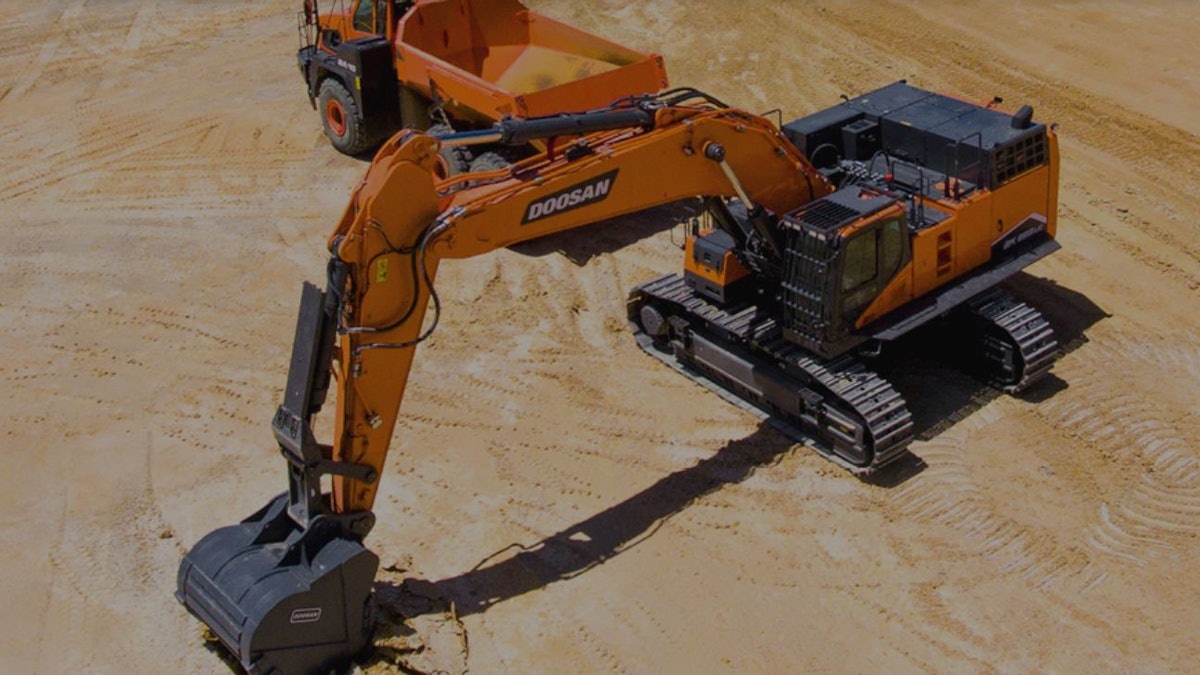
Hyundai could Finalize a Purchase of Doosan Infracore by Year’s End
Deal faces potential challenges from Korea’s monopoly regulations, and the fate of Doosan Bobcat is uncertain
In 2020 HHI took over Doosan Infracore. The main focus was their heavy equipments division, but since Doosan Infracore also manufacture heavy duty engines, of which there are also military engines, the newly formed Hyundai Doosan Infracore is also a defence contractor. Overall a positive development and finally, HHI, the most experienced diesel engine manufacturer in Korea, is involved in defence industry.
On a side note, Hyundai Group was split up into many separate companies in the 2000s, due to household inheritence issues of the Hyundai Chaebol. As a result, Hyundai Motor Group, the well known automotive brand and owner of Hyundai Rotem and Hyundai Heavy Industries, World's largest shipbuilder.
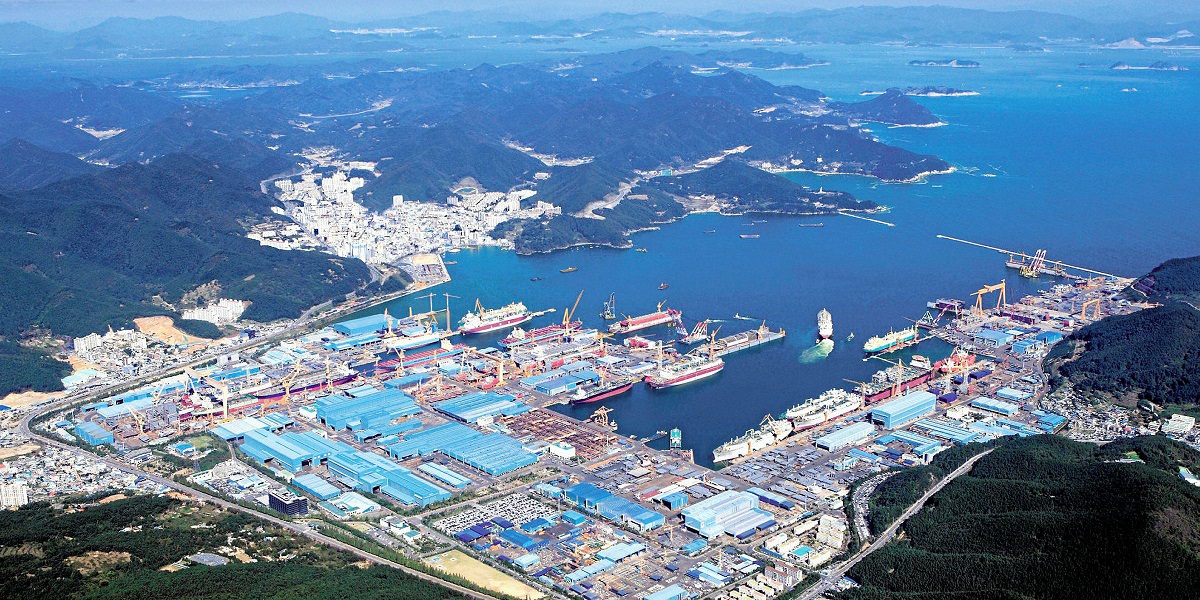
South Korea's Hanwha Group Acquires DSME - Naval News
Hanwha Group signed a memorandum of understanding (MoU) with DSME on September 26, acquiring 49.3 percent of DSME’s shares.
Deal to Sell DSME to Hanwha Proceeds as No Other Bidders Emerge
The agreement to sell Daewoo Shipbuilding & Marine Engineering (DSME) to South Korean conglomerate Hanwha Group is moving forward after no alternate b...
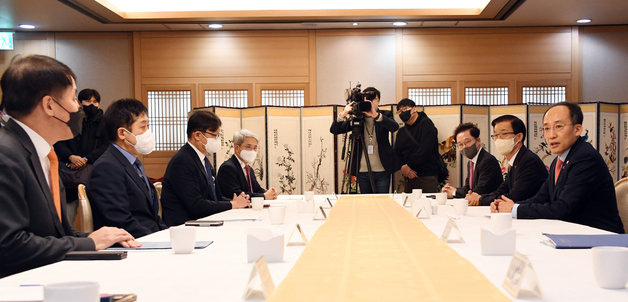
한화, 대우조선 인수 본계약 체결…육해공 방산기업 ‘우뚝’
대우조선해양과 한화그룹이 인수 본계약을 체결하기로 합의했다. 지난 9월 한화그룹이 인수 계획을 밝힌 지 3개월 만이다. 16일 기획재정부에 따르면, 추경호 부총리 겸 기재부 장관은 이날 오전 정부서울청사에서 ‘산업경쟁력강화 관계장관회의’를 개최하고 산업은행으로부…
www.donga.com

한화, 오늘 대우조선해양 인수 본계약 체결…14년 만에 품에 안을까
16일 한화그룹-대우조선해양 인수 본계약이 체결된다. 앞서 9월 인수 계획을 밝힌 지 3개월 만이자 2008년 한화가 첫 대우조선해양 인수에 나섰다 좌절된 지 14년 만이다. 이날 정관계 및 재계에 따르면 추경호 부총리 겸 기획재정부 장관 주재로 오전 중 산업경쟁력 강화 관계장관회의가…
www.donga.com
Hanwha officially took over DSME yesterday KST. With this merger, Hanwha is now in the shipbuilding business and can provide most of the major components a naval ship needs in-house, starting with the hull, CMS and other electronics and lastly the engine, although they'll need to get the diesel engines from an external source and their naval gas turbines are licensed GE models.
Their last venture in the defence industry left would be the manufacturing of an aircraft which they are very willing to do, This is evident by their past attempts to acquire KAI, which have failed.
Prior to acquisition by Hanwha, HHI tried to take DSME over, in order to form a mega shipbuilding corporation called Korea Shipbuilding and Marine Engineering. This was stopped however by the EU and other nations due to concerns of possible market oligopoly/monopoly, especially in the LNG tanker market.
Last edited:





